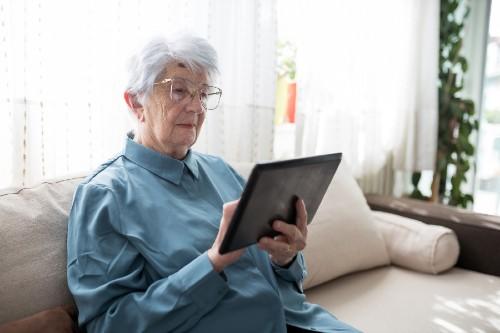
The webpages of Facebook are a seemingly endless source of news, connection, and entertainment for billions of people. A new study from the School of Public Health (SPH) also finds that the social networking platform functioned as a kind of informal emergency broadcast system for people seeking critical information and support during the pandemic.
“The study covers the early days of the national lockdown all the way to the point where some states started announcing plans to open back up,” says SPH researcher and study lead author Jude Mikal. “Here we had this unifying national stressor, and a tool to bring us all together to cope and manage the emergency — it’s been an unprecedented opportunity for Facebook to be used for good.”
Mikal specializes in studying how people use social media for support and to exchange health-related information and resources. This new study was recently published in the journal Computers in Human Behavior Reports.
During the first two weeks of widespread of COVID-19 in the United States (3/8/2020–3/22/2020), Mikal recruited individuals previously involved in other Facebook-related studies to participate in a weekly survey on their pandemic social media use. A group of 32 participants were then subsequently surveyed over the next eight weeks and asked about their Facebook use, pandemic knowledge and behavior, and what they read or discussed.
The study saw an evolution over time in how people used Facebook during the lockdown:
- Early in the pandemic social media was a rallying point for support and information exchange.
- In later weeks, saturation from accurate and false information and political contention were significant problems.
- The final weeks were characterized by policing others' social distancing compliance in a sort of “call-out” culture. User comments and posts showed there was a lot of confusion regarding proper social distancing practices.
“The degree to which social media served as an emergency communication system is colossal,” says Mikal. “For the first two weeks, you saw people providing tons of information and resources as a means of supporting and propping each other up and helping each other understand what was happening and how serious it was.”
The researchers found that users initially exchanged information ranging from explanations of COVID-19 infection rates to tips on how to entertain homebound children. Later, misinformation began to spread and frustrated users began policing each other on their social distancing practices and behaviors.
Mikal thinks that government agencies, such as the Centers for Disease Control (CDC), missed an opportunity to quickly and broadly communicate its messages regarding the pandemic.
“The CDC and Facebook itself were slow to see the power of the platform to share critical information,” says Mikal. “Because of the delay, users went from sharing the limited accurate information they had, to becoming bored, posting news from less reliable sources, and then eventually, fighting with one another. This contributed to a spreading of misinformation.”
In response, Mikal recommends that government agencies start conducting similar rapid studies during emergencies to detect confusion and conflict regarding the events. The agencies could then use the results to design public service campaigns to strategically deliver accurate, understandable information. He also suggests that social networks, such as Facebook, seek ways to aid agencies in their campaigns by finding ways to boost their messages for maximum visibility and stop the spread of misinformation.
- Categories:
- Health
- Communication
- COVID-19




